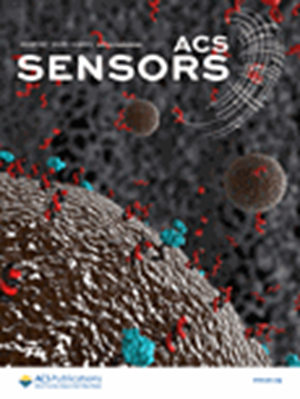Ion-Selective Electrodes: Selectivity Coefficients for Interfering Ions of the Opposite Charge Sign
IF 8.2
1区 化学
Q1 CHEMISTRY, ANALYTICAL
引用次数: 0
Abstract
The way upper limits of detection (LODs) are typically reported in the ion-selective electrode (ISE) literature is unfortunately outdated. It is well understood that the upper LOD of a polymeric-membrane ISE is limited by Donnan failure, that is, the transfer of primary ions along with interfering ions of the opposite charge sign (commonly referred to as counterions) from the sample into the sensing membrane. However, it is often difficult to compare upper LODs for ISEs from different sources. The majority of publications on ISEs describe Donnan failure for one type of counterion only, making it impossible for end users to predict the interference for other counterions. Moreover, linear ranges for ISEs based on different ionophores cannot be compared to one another when Donnan failure was reported for different counterions. To this end, we introduce here selectivity coefficients, KI,XpotX, for interfering counterions. Using this new concept, the primary ion activity at which Donnan failure occurs can be readily predicted from measured KI,XpotX values by the use of the uncomplicated expression aXzI/zx/KI,XpotX. Consistent with the intuition that many ISE users have for conventional selectivity coefficients, large KI,XpotX values are characteristic for counterions that interfere strongly. We show experimentally that trends as predicted by the phase boundary model for Donnan failure, such as the effects of counterion hydrophobicity and ionophore complex stability, are often accurately predicted with the KI,XpotX approach. However, there are notable exceptions when the underlying assumptions made by users do not apply, such as when counterions unexpectedly form aggregates with other species in the sensing membranes. The empirically measured KI,XpotX coefficients enable the discovery of such phenomena, opening a rational path to improving upper LODs and, thereby, linear response ranges.

求助全文
约1分钟内获得全文
求助全文
来源期刊

ACS Sensors
Chemical Engineering-Bioengineering
CiteScore
14.50
自引率
3.40%
发文量
372
期刊介绍:
ACS Sensors is a peer-reviewed research journal that focuses on the dissemination of new and original knowledge in the field of sensor science, particularly those that selectively sense chemical or biological species or processes. The journal covers a broad range of topics, including but not limited to biosensors, chemical sensors, gas sensors, intracellular sensors, single molecule sensors, cell chips, and microfluidic devices. It aims to publish articles that address conceptual advances in sensing technology applicable to various types of analytes or application papers that report on the use of existing sensing concepts in new ways or for new analytes.
 求助内容:
求助内容: 应助结果提醒方式:
应助结果提醒方式:


